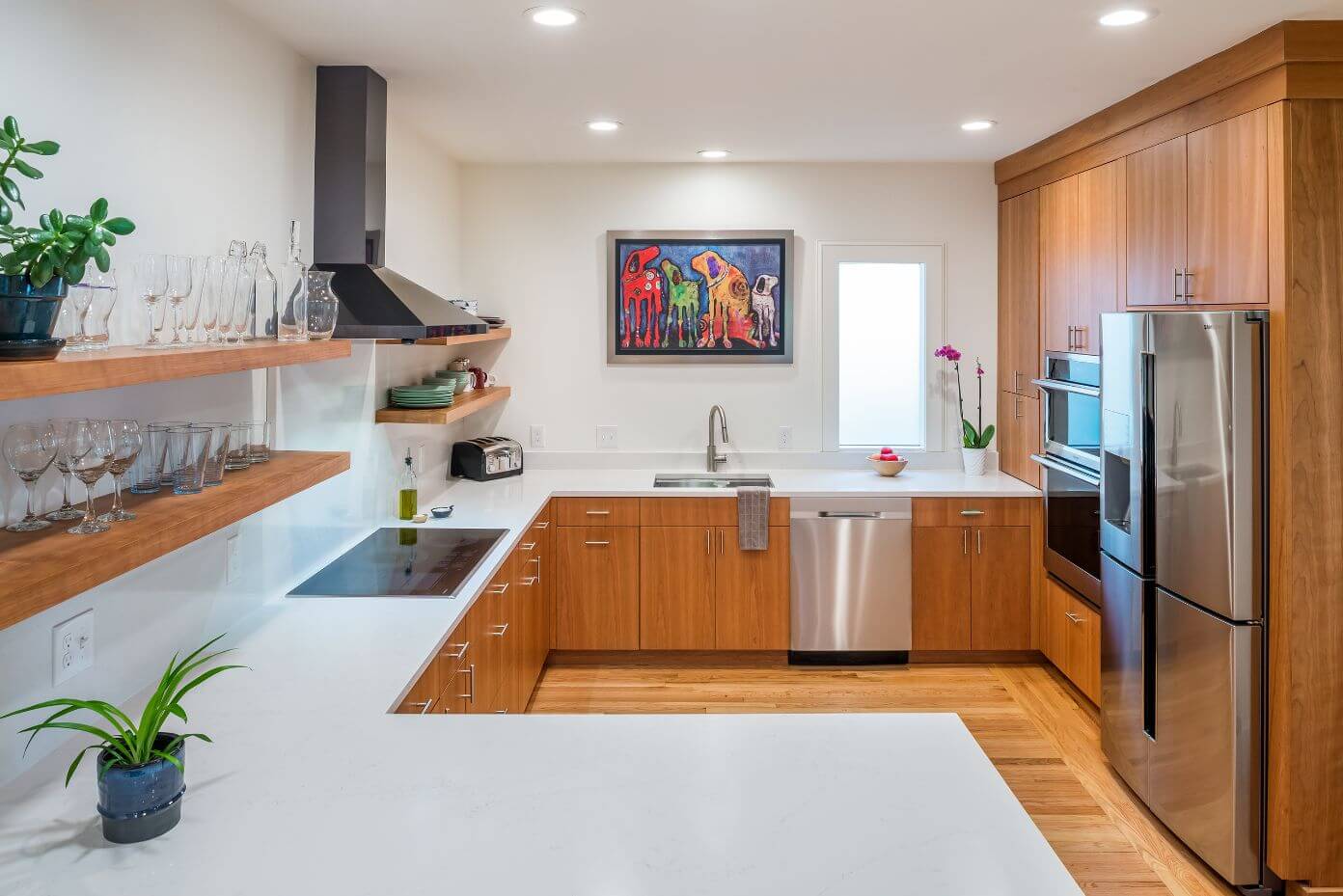
Induction Cooktops: 7 Reasons to Switch to an Induction Cooktop
What is an Induction cooktop?
An Induction cooktop is a type of electric stove that uses magnetic fields to heat cookware directly, rather than heating the cooktop’s surface. When you place a magnetic pot or pan on an induction cooktop, an alternating current passes through a coil of wire underneath the cooktop’s glass surface, generating a magnetic field that induces an electric current, heating the cookware. It’s pretty cool.
Looking at your kitchen set up now, you might wonder – are all glass cooktops induction? The answer is no. First off, induction cooktops are more expensive than a typical electric option. Second, you can use most cookware on a glass cooktop, but induction requires magnetic cookware, meaning stainless steel, cast iron, or carbon steel (some ceramic-coated metal cookware can also be used). Third (and this is the most important), in induction, the magnetic current produces the heat, not the element under the glass. This means the cooktop stays relatively cool and the heat is isolated to the pan. When the current is turned off, the pan cools very quickly. And, when you turn the current back on, the pan heats up very quickly. It’s a different cooking experience.
Why are gas stoves bad for you?
Health Impact:
Gas stoves can be bad for you due to the indoor air pollution they can produce. They can omit high levels of nitrogen dioxide, irritating the eyes, nose, and throat and exacerbating respiratory problems such as asthma. Carbon monoxide is another pollutant emitted by gas stoves, which can cause headaches, dizziness, nausea, and even death in high concentrations. Particulate matter, which is released when gas stoves are used, can also contribute to respiratory problems. In fact, scientists have found that 12% of childhood asthma could be caused by using gas stoves.
Safety concerns:
Gas stoves can also pose a safety hazard if they’re not properly installed or maintained. Gas leaks can occur if there’s a problem with the gas line or if the stove is not properly vented. Gas leaks can be dangerous and even deadly if not detected and addressed quickly.
Overall, gas stoves can be bad for you due to the indoor air pollution they can produce, which can lead to negative health effects and safety concerns. While it’s difficult to completely eliminate exposure to these pollutants, there are steps you can take to reduce your risk, such as ensuring that your gas stove is properly vented and using a range hood that exhausts pollutants outside.
7 Reasons to Switch to an Induction Cooktop
Here are 10 reasons why you might consider switching to an induction cooktop from a traditional gas or electric stove:
Healthier indoor air quality:
Induction cooktops have many benefits, but possibly the most important is personal health. One of the major changes in code over the last decade has been the requirement of a makeup air system if a kitchen hood pulls more than 400 cfm (cubic feet per minute) from your home. Many gas cooktops recommend a level of extraction that is above 400 cfm, but most homeowners do not have one. While many home cooks think this hood is required to evacuate smoke and steam from cooking, the more important function is to evacuate carbon monoxide (CO), a toxic gas that is created by gas cooktops. Induction cooktops do not have these emissions.
Energy efficiency:
Induction cooktops are more energy-efficient than gas or electric stoves because they directly heat the cookware, rather than the air around it, resulting in less wasted heat. This can help you save money on your energy bill. If you hate cooking at the stove in the summer, induction cooking is ideal. These cooktops don’t warm the air in the kitchen anywhere near as much as a gas or conventional electric stove. This means that you also save on air-conditioning costs and energy usage.
As for cooking food, on average, only 30% of the heat from a gas-burning cooktop goes into the heated food. 42% of heat is transferred with a traditional electric stove. With an induction cooktop, 76% of the heat goes into food cooking.
Saving money:
While an induction cooktop will cost more than a traditional stove, it can save you money on your utility bill. With an induction cooktop, the less than 400 CFMs hood required to keep clean air in your home when cooking won’t require you to install a makeup air system. While there are several great reasons to have a make up air system installed in a whole home remodel with a fully upgraded building envelope, or a new home built at or above current codes for air changes per hour, for many remodels on older homes, they seem like overkill.
A makeup air system can cost anywhere from $1500 – $9000. Depending on your municipality, you may be required to install the more expensive version. The cheaper versions dump cold, unconditioned air directly into your home, creating a cold room or space that needs additional heating to be comfortable, raising your utility bill. The more expensive models pump air directly into the heating system and is conditioned before blending with otherwise conditioned air. Either way, this system costs the client money in the short term and the long run.
Safety:
Induction cooktops are safer than gas stoves because they don’t have an open flame, which can pose a fire hazard. This means that there is less risk of fire or burns, making them a great choice for homes with young children or pets.
Easy to clean:
Induction cooktops have a smooth glass surface that is easy to clean and doesn’t have any grates or burners to scrub. The cooktop also doesn’t get hot, which means less burnt on food. You can simply wipe it down with a damp cloth, rather than having to scrub away at grime.
Temperature control:
Induction cooktops offer precise temperature control, allowing you to quickly and easily adjust the heat to the perfect temperature for your cooking needs. This means you can cook your food at a lower heat for longer periods of time, which is ideal for delicate dishes like sauces and soups. Induction cooktops also heat evenly and consistently, preventing hot spots and ensuring that your food is cooked evenly.
Sleek & Quiet:
Induction cooktops have a modern, sleek design that can add a contemporary touch to your kitchen. They operate quietly, without the noise and rumbling that you might get with a gas stove.
Induction cooktop, the healthier choice
Overall, induction cooktops are a great option for those looking for a more energy-efficient, faster, safer, and healthier way to cook. If you’d like to learn more about adding an induction cooktop to your kitchen remodel, contact us.
Want to learn more about the benefits of home electrification? Click here.
- Category :
- Type :

